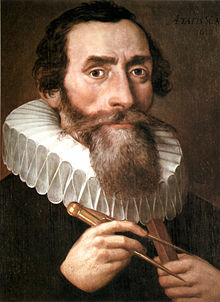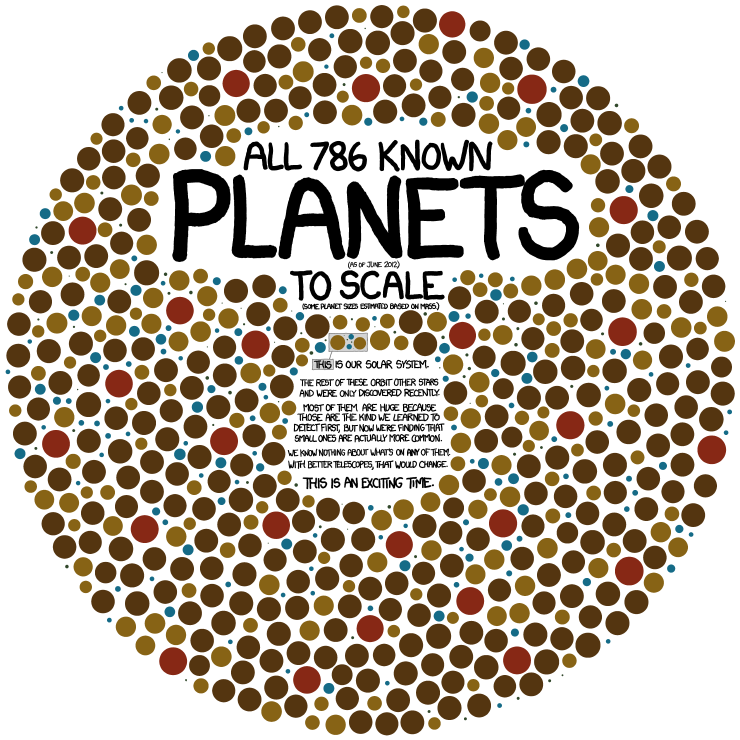Modern technology has enabled us to find thousands of planets orbiting stars other than our own Sun, only within the past few decades. Most of these planets fall into three broad categories: ice giants, gas giants, or hot super-Earths. The most intriguing kind of exoplanet, the holy grail of exoplanet discovery, Earth-like planets in their respective habitable zones, is less commonly found. The Kepler Mission is a NASA Discovery mission that is responsible for finding a majority of the planetary candidates we know of today, and is designed to find these diamonds in the rough over the course of its full mission lifetime. Kepler has taken us leaps and bounds beyond the big puffy hot-Jupiters we were first aware of, and its success is taking large steps toward discovering extraterrestrial life. So who was the eponym, Kepler? It’s a name we’ve all heard, but it doesn’t carry with it the same stories the other giant names of science carry: Newton’s apple, Galileo’s finger, Archemides’s “Eureka!”
 |
| Contrary to popular belief, Kepler is not holding chopsticks |
There is not much hype about Johannes Kepler, and perhaps that's because at first he just wasn't the most popular guy. Being born premature and constantly sick wasn't really conducive to running around with the other boys in grammar school, and his bookworm tendencies left him with few admirers. As a bit of a misfit, he set himself to the pursuit of knowledge, and while the others would ridicule him, Kepler voraciously set his mind to a myriad of subjects, such as poetry, astrology, theology, and mathematics . He kept a detailed daily journal, and many sections were on his quarrels with and hatred for his classmates. As he would write later, "they were always rivals in worth, honors, and success.” Yet for all the disapproval, Kepler’s unorthodox approaches to problems were an advantage in his scientific endeavors. He was one of the first to defend the Copernican heliocentric system using a theological basis, and he consistently came out on top intellectually. His first landmark work, Mysterium Cosmographicum, in which he discussed the geometry of the universe, was published when he was only twenty-four.
Like Newton, who would come into the picture some fifty years later, Kepler’s early life was marked by a combination of scientific brilliance and childhood unpopularity, and also like Newton, he was a devout Christian. Kepler attended seminary for much of his early life, and he was usually not far from a theological text. In fact, in all of his scientific achievements he would take both a philosophical and mathematical approach, believing that the cosmos was the ultimate revelation of the glory of the creator. Even his defense of the heliocentric model of the universe had its theological foundations. Seeing the universe as a portrait of God, he viewed the Sun as symbolic of God the Father, the "stellar sphere" as the Son, Jesus, and the space in between everything as the Holy Spirit. This was all originally included in Mysterium Cosmographicum, until his publisher later removed it. He journaled regularly about his daily life, which has been quite useful for modern historians. He was as much of a philosopher as a scientist, and he frequently combined the two disciplines. Always remaining true to his theoretical side, he wrote in a letter, “Don't sentence me completely to the treadmill of mathematical calculations. Leave me time for philosophical speculations, my sole delight!” Arthur Koestler writes in his modern biography of Kepler: “[he was] the most reckless and erratic spiritual adventurer of the scientific revolution.”
In the midst of his theological studies however, he was asked to teach mathematics, and accepted a position at a Protestant school in Austria. It was there he completed Mysterium Cosmographicum. Henceforth he held many prestigious positions, including the one previously held by Tycho Brahe of Imperial Mathematician. Brahe’s death allowed Kepler access to his highly protected data, thus heralding Kepler's most prolific age. In Astronomia Nova, he published his first two laws of planetary motion:
1. Every planet follows an elliptical orbit with its host star at one focus.
2. A line drawn from the star to the planet sweeps out equal areas in equal times.
Despite all his mathematical genius, his works were praised by few and scoffed at by many. There was much discussion over the first law. Some of Kepler’s contemporaries believed that this shattered the “circularity and uniformity of motion” and could not comprehend the depth of the work he had done. And when Kepler theorized that the moon had influence upon the tides, Galileo himself remarked, “That concept is completely repugnant to my mind.” Still, he rose to fame as a scholar.
Ten years after the publication of the first two laws, Kepler’s third law, arguably the most significant for modern planetary scientists, was unveiled in his book Harmonices Mundi.
3. The square of the orbital period is directly proportional to the cube of its semi-major axis.
This law, made concrete by Newton as }) is an essential ingredient to our modern understandings of planetary systems. And ever the philosophical scientist, Kepler also discussed literally the “music of the spheres” in which he revealed the physical harmonies found in the motion of planets.
is an essential ingredient to our modern understandings of planetary systems. And ever the philosophical scientist, Kepler also discussed literally the “music of the spheres” in which he revealed the physical harmonies found in the motion of planets.
As a Protestant during The Thirty Years War, 1618-1648, Kepler was forced to leave his home and travel during his last years. He died without pomp and circumstance, but his work would build a foundation for great scientists to come. Though Kepler now is considered one of the keystone figures of the Scientific Revolution, at the time he was criticized for combining physics and astronomy, generally considered two separate branches of philosophy and natural science. He was one of the first to see the necessity to link philosophy and science, and he remained a devout Christian to the end. His life shows that philosophy, theology, and the scientific method aren’t necessarily mutually exclusive; in fact for Kepler, each was essential for a complete and holistic perspective on the others.
“I measured the skies, now the shadows I measure
Skybound was the mind, earthbound the body rests.”
Kepler’s epitaph
